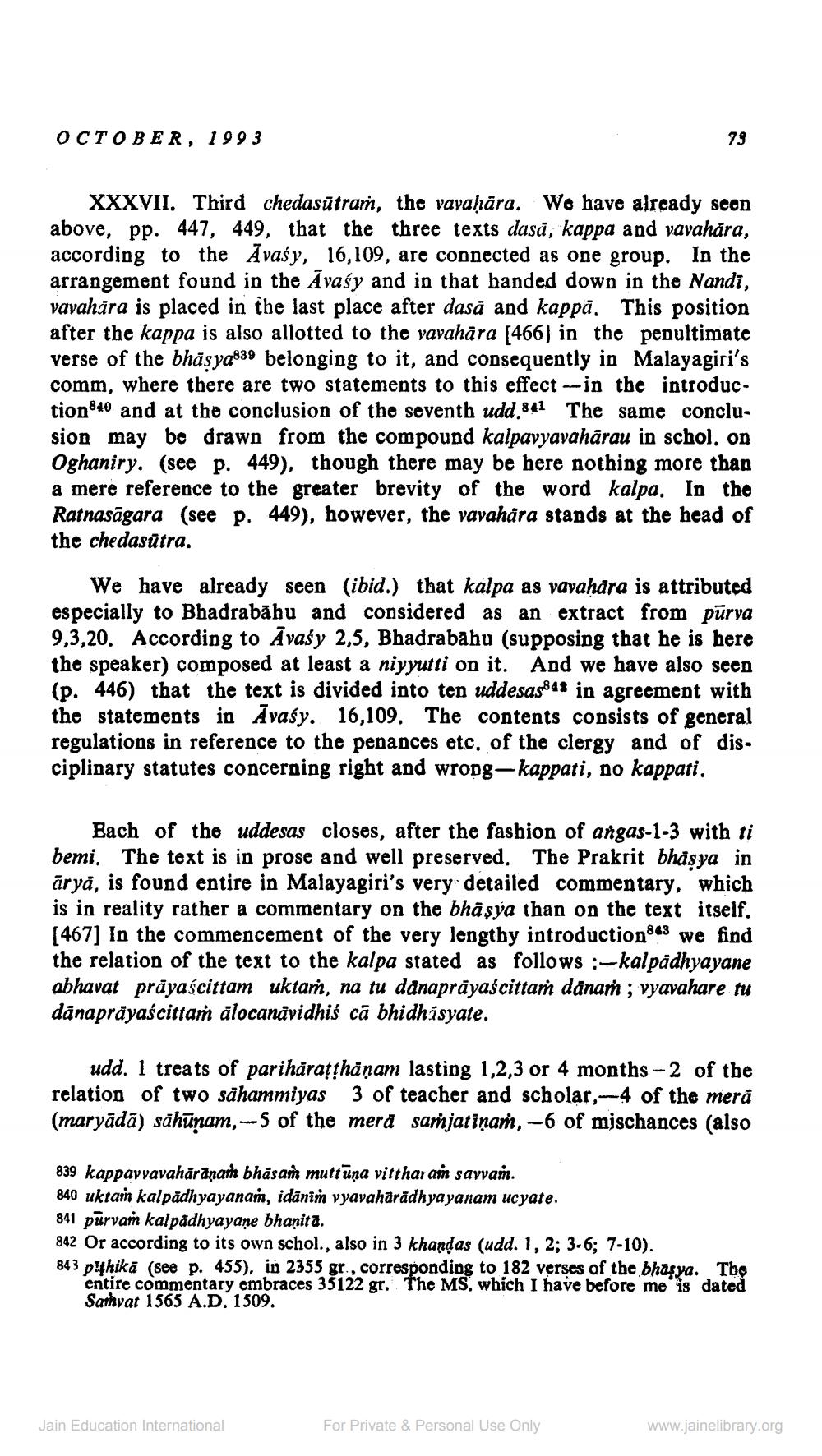________________
OCTOBER, 1993
XXXVII. Third chedasūtram, the vavaḥāra. Wo have already seen above, pp. 447, 449, that the three texts dasā, kappa and vavahāra, according to the Avasy, 16,109, are connected as one group. In the arrangement found in the Avasy and in that handed down in the Nandi, vavahāra is placed in the last place after dasă and kappă. This position after the kappa is also allotted to the vavahāra [466) in the penultimate verse of the bhāsya839 belonging to it, and consequently in Malayagiri's comm, where there are two statements to this effect in the introduction840 and at the conclusion of the seventh udd.8.41 The same conclusion may be drawn from the compound kalpavyavahärau in schol, on Oghaniry. (see p. 449), though there may be here nothing more than a mere reference to the greater brevity of the word kalpa. In the Ratnasāgara (see p. 449), however, the vavahåra stands at the head of the chedasūtra.
We have already seen (ibid.) that kalpa as vayahāra is attributed especially to Bhadrababu and considered as an extract from pūrva 9,3,20. According to Āvašy 2,5, Bhadrabahu (supposing that he is here the speaker) composed at least a niyyutti on it. And we have also seen (p. 446) that the text is divided into ten uddesas84% in agreement with the statements in Āvasy. 16,109. The contents consists of general regulations in reference to the penances etc, of the clergy and of dis. ciplinary statutes concerning right and wrong-kappati, no kappati,
Each of the uddesas closes, after the fashion of angas-1-3 with ti bemi. The text is in prose and well preserved. The Prakrit bhäsya in āryā, is found entire in Malayagiri's very detailed commentary, which is in reality rather a commentary on the bhāsya than on the text itself. [467] In the commencement of the very lengthy introduction843 we find the relation of the text to the kalpa stated as follows :-kalpädhyayane abhavat prayascittam uktam, na tu dånaprāyaścittam danaṁ ; vyavahare ty dānaprāyaścittaṁ alocanăvidhiś cā bhidh isyate.
udd. 1 treats of parihāratthäņam lasting 1,2,3 or 4 months - 2 of the relation of two sähammiyas 3 of teacher and scholar,--4 of the mera (maryādā) sähūnam. --5 of the meră samjatinań,-6 of mischances (also
839 kappavvavahäränath bhasam muttuna vitthar am savvam. 840 uktain kalpadhyayanan, idāniň vyavahärädhya yanam ucyate. 841 purvam kal pådhyayane bhanita. 842 Or according to its own schol., also in 3 khandas (udd. 1, 2; 3-6; 7-10). 843 pithikā (see p. 455), in 2355 gr., corresponding to 182 verses of the bhasya. The
entire commentary embraces 35122 gr. The MS, which I have before me is dated
correspondins udd. 1, 2; 3.6; 7-103
Sarhvar 1565 entary embraces
Jain Education International
For Private & Personal Use Only
www.jainelibrary.org




